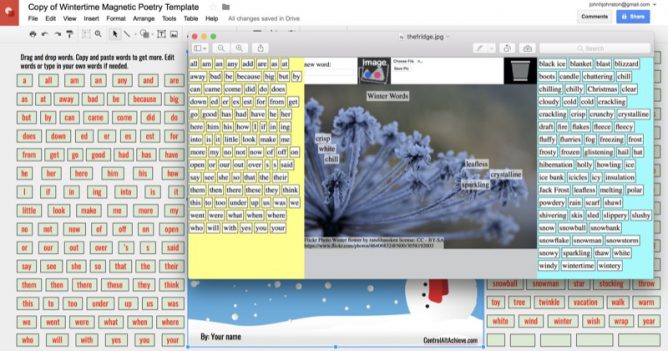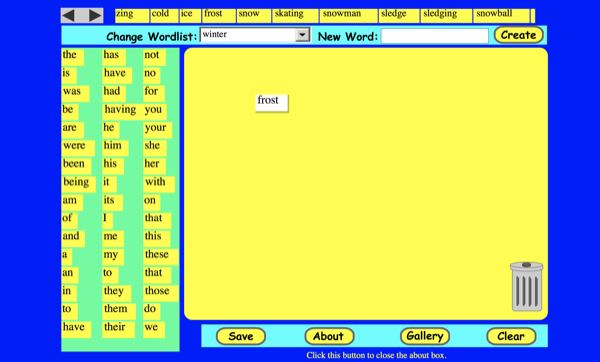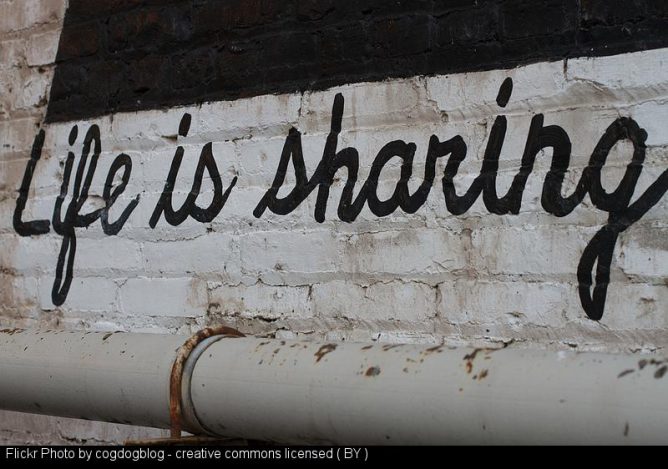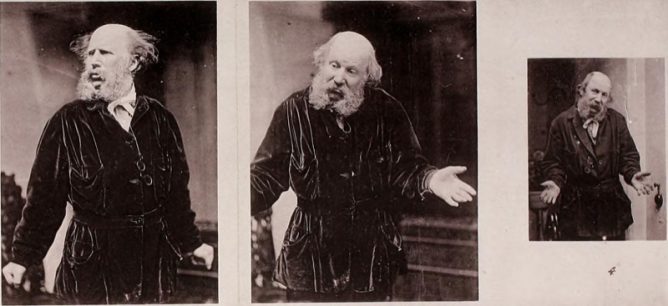I wonder. My old primary school, Sandaig, had a postcard project. Got postcards from all round the world. Kids took photos of them & posted to postcard blog. Head Teacher got scary bill from Getty as they identified one of the blurry snapshots as theirs. Blog Deleted:-(
Tag: copyright
What exists in the space between riffing and ripping
via Aaron Copying is the way design works. Super stuff!
Not content with being an already great free service, Unsplash now has collections for education.
Not content with being an already great free service, Unsplash now has collections for education.
@matthewlang on micro.blog reminds me of unsplash, I must add to list of photo sources for my class.
An apology to @ericcurts Eric Curts

For the last couple of weeks I’ve been playing with the Fridge I blogged about the other day.
I was feeling pretty please with myself until I got a DM for Eric earlier this (UK) evening. He noticed that the dolch list on the screenshot of the webpage I had made was pretty much the same one he had used on an activity he had made and blogged about: Control Alt Achieve: Wintertime Magnetic Poetry with Google Drawings. It was the same list. I remember seeing his site when I google dolch or wordlist. I can remember copying the list but I must have done so. I didn’t keep the list, replacing it on Sunday with a full (or almost full) dolch list. But I did take and use Eric’s curation of the list without attribution at the time.
Eric was gracious enough to DM me rather than call me out publicly, giving me a wee bit of breathing room to put things right for which I am grateful.
I am particularly embarrassed as I spend a fair bit of time talking about copyright and creative commons, the image search in the fridge provides automatic attribution. I’ve often blogged about it and the difficulty in getting pupils away from a straight google search. In the previous post, I credit Tom Woodward for the idea, and link to the code I’ve used. I just didn’t even think about the words and the work involved in curating a list. I am now presuming that my using the dolch list is ok?
Eric was also kind enough not to suggest I’d taken the whole idea from his template, which looks like a quite reasonable assumption. Here I can only plead I’ve been playing with virtual fridge magnets for a while, this effort: fridge is from 2002. Made with Flash and flamethrower (sic) 1.

I’ve added some attribution to The Fridge now, I’ll update any help for it that I produce and link to this post from Sundays shortly.
I can only repeat my apology to Eric and thank him for the lesson.
- The flash bit still works, Flamethrower is no more. ↩
23 Things: 11 copyright

The weeks are flying by. I was hoping to backtrack on a few things this week but Week Six. Copyright, OERs and Creative Commons – 23 Things popped into my inbox and thing 11 is quite timely.
Here and there
I’ve blogged here about copyright quite a bit, but it is a constantly interesting subject.
I am in general a respecter of copyright. I use other people’s images her on the blog and always attribute and respect copyright.
Occasionally for more creative purposes I sidestep the rules to use of old movie or tv footage on my DS106 blog for more fun stuff (example: characters). I don’t think any corporate dollars have been harmed;-)
I’ve had a licence on this blog for a while, originally a BY, Share Alike-Non Commercial one. Currently a Creative Commons Attribution-ShareAlike 4.0 International License.
A couple of days ago I read [Trying] Going to Flickr Zero, CC0 where Alan has changed all of his Flickr licenses to CC0. I can see the point.
My flickr photos are CC-BY-SA in the same way as this blog. This got me thinking. I am, unlike Alan, no photographer. It is unlikely anyone is going to make loads of cash from any of my images (or my deathless prose here). Over the years I’ve had a couple (2) of folk contact me to use a picture of mine for “commercial” purposes, and been delighted to do so. CC0 would change little except make reuse easier.
But I do like the idea of attribution and getting attributed. The attention feels nice. It also might encourage others…
The Share Alike idea seems nice too, but I guess might occasionally make things more difficult to use. I may lose that soon.
Another recent post that looks at the issue with some subtly: On Attribution vs Privilege of CC0Reflecting Allowed | Reflecting Allowed.
But not everything I create can be CC0. Not yet. And in my local context these things can really really matter. It can make the difference between who gets a job or tenure or promotion and who doesn’t.
and in the comments:
Audrey Alan and Doug are examples of intersectionality here – no stable academic job but famous and with lots of social capital.
I’ve not really got any problems in this regard, being an amateur sharer rather than a pro.
In Primary School
This is hard. Over the past few years I’ve had to explain copyright to teachers. Now I am back in class working with 8-11 year olds. Since I was last in the classroom full time pupils spend a lot more time on line, they are very familiar with finding images via google searches but digging out the license is hard. Lots of tools now make it very easy to ignore copyright.
I fall back on providing my class with some public domain sites to search and my FlickrCC Stampr.
Resources
Some things I’ve found useful:
- The 23 things overview of copyright is as clear and concise an overview as I’ve seen.
- Alan Levine is a great resource and example of using CC. Recently he has been working on Creative Commons Certification.
- Alan provides a nice flickr cc attribution bookmarklet maker.
- My friend Theo has a Page with links to 5million + openly licensed images, audio & video files educators can use safely & legally OpenContentToolkit – Links to Open Content.
- I made FlickrCC Stampr This is a way to search for, and stamp with attribution, Flickr images that you can use. It is designed with school pupils and mobile in mind.
Featured image: Life is Sharing | Part of a Cleveland mural, the full saying… | Flickr CC-BY Alan Levine. Stamped my module for Alan’s’flickr cc attribution bookmarklet maker.
Open expression

Top / Featured Image: A mashup of many random Monopoly game parts found on The Google (images search). Most were not openly licensed, and I freely admit taking them to remix into something new and commercially unviable. I am so guilty of theft. But at some point we have to ask about the idea of digital ownership of parts of popular culture used in a manner of open expression.
This is the note on the featured image on Alan’s post. As I start to try and get my head round explaining copyright to pupils it is a nice reminder of how complex the whole thing is. Alan, credits carefully all of the images he uses as featured images. Something I’ve started to try and do myself.
When talking pupils I find my self tending to stick closer to the law that I would do myself. I am pretty careful to attribute and use images that are legal, but occasionally will take a gif from a movie, especially in ds106 land.
The featured image in this post is public domain from Image from page 283 of “The expression of the emotions in man and animals” (1872). I though expressions for confusion and puzzlement worked with my feeling about copyright.
The link on the post should point to Alan’s original blog, I am hoping this is a useful way of link blogging, it may cause a bit of confusion if you click the link that will be tweeted.
Practically Open
As part of the week 1 of P2PU Why Open? course participants were invited to join David Wiley on a google hangout (Why Open session with David Wiley). I could not make the live stream so have just finished watching the archive.
I’ve also posted the audio ripped from the session, with permission, over at EDUtalk.cc (As usual I find audio easier to access than video).
These are a few of the things that I found interesting in the hangout, not in any order and very much my own interpretation.
David is the founder of OpenContent.org, among many other things and a expert on open content and open educational resources.
Throughout the talk David focused on the pragmatic rather than the idealistic, on what would make an impact over what was right or righteous.
He started talking about the difference between the Free Software movement and the Open source movement, and how Richard Stallmam’s Four Freedoms inspired all the openness that followed. David’s view is that Open is less do do with correctness & morality and more practical.
David say Free involves a bit of moral grandstanding, giving no place for proprietary software. Open says open is practical and we can choose not to be open which is not morally bad.
The other side of the argument is laid out here: Why Open Source Misses the Point of Free Software – GNU Project – Free Software Foundation and The Four Freedoms from Matt Mullenweg are worth considering from the pov of the practicality of Free Software.
David talked of the Berne Convention that in 1886 changed the face of copyright:
Under the Convention, copyrights for are automatically in force upon their creation without being asserted or declared. An author need not “register” or “apply for” a copyright in countries adhering to the Convention. As soon as a work is “fixed”, that is, written or recorded on some physical medium, its author is automatically entitled to all copyrights in the work and to any derivative works, unless and until the author explicitly disclaims them or until the copyright expires.
from: Berne Convention – Wikipedia.
This switch the default from you are ok to copy to you are not. If you publish something you need to legally state wish to share. This leads to existing material with unknown copyright is not being published.
David works with the Open Content Definition which uses the 5 Rs the rights to Retain, Reuse, Revise, Remix and Redistribute. The Retain right has been added to address, and highlight, the problem of business models that control access, eg, stream media.
David gave a few examples of the practicality of open, obviously OERs are cheaper than textbooks, but a major gain in moving towards open might be in higher where the movement to competency based course is slowly gaining ground. The argument is that these competencies are slow to develop and the process could be speeded up by opening the competencies. Open assessments would be another area to explore.
Someone in the hangout expressed the worry that publishing in the open would be less useful from an employability angle than publishing to well established (and paywalled) publication. David discussed the idea of the impact of publishing on the open demonstrating with Google Scholar the number of times open publications are cited as compared to paywalled ones. Publishing in open will maximise the number of people reading so giving a better chance of making an impact. Again the outcome was more important than the philosophy.
Exploring another tension, that of Open vs Connected, David proposed that connected is a vice when taken to extremes. For example there are now so many resources in google it is hard to identify the best resources. More nodes and connections becomes noise at some point. Curation and structure needed on top of connected. Curation is biggest value that faculty brings to learning. Neither open or connected should not be their own end.
My own practise of working/blogging/learning in the open is based on a fairly fluffy feel good factor. I’ve found over the years that this has had a positive effect on myself and learners I work with. I covered this in a previous post. I now feel that it will be important to start to try and bring openness more formally into my day to day work and made small steps in that direction today. Instead of looking for good vibes I’ll be trying to introduce open where it can make an impact.
Possible Copyright Lesson
A while back I was involved in a discussion about copyright on John Connell’s blog, I’ve just had another though about teaching copyright.
I occasionally look through the stats for the school website and see were links etc are coming from. today I noticed some connections to youtube and myspace. I followed a couple up and found that they were using images from Sandaig blogs as background images. My first though was to be a bit annoyed about the use of our bandwidth. Then I started to wonder how the children would react. How would they feel about their images being used on someone else’s site without attribution. I don’t know if I’ll get a chance to discuss this with the class (my p6 from last year), but it might be an interesting example to spark some discussion.


